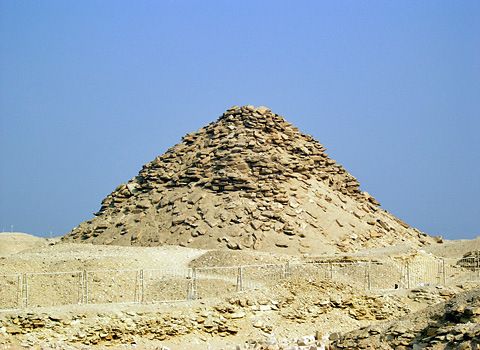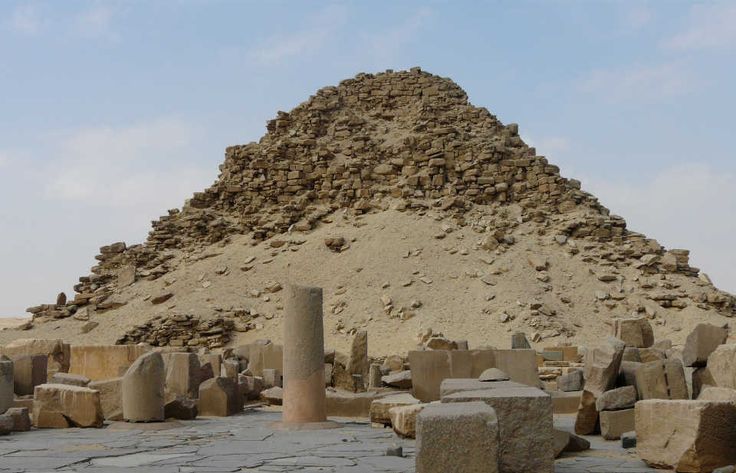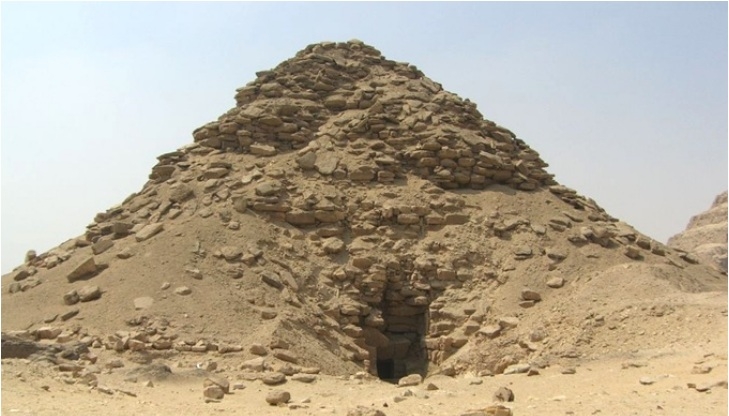Introduction
When most travelers think of Egypt, their minds immediately leap to the Great Pyramid of Giza and the iconic Sphinx. But for those who crave a deeper journey into Egypt’s royal past, there’s a lesser-known marvel waiting quietly in the sands of Saqqara—the Pyramid of Userkaf.
Tucked away in the ancient necropolis of Saqqara, this pyramid is not just another tomb—it’s the beginning of a whole new era in Egyptian architecture and kingship. If you're planning your Egyptian adventure and want to see more than just the postcard highlights, the Pyramid of Userkaf Saqqara offers an unforgettable experience rich with mystery, innovation, and history.
Let’s explore this hidden gem together.

Who Was Userkaf?
Userkaf was the founder of the Fifth Dynasty of Egypt, which ruled around 2494–2487 BCE. He rose to power after the end of the Fourth Dynasty—a time known for building colossal pyramids like those at Giza. But instead of trying to outmatch those monuments in size, Userkaf focused on religious reforms and the solar cult of Ra, the sun god.
This philosophical and spiritual shift marked a significant transformation in Egypt’s royal ideology. Userkaf's reign laid the foundation for a new period of emphasis on solar temples and smaller, more functionally designed pyramids.
Location: Where Is the Pyramid of Userkaf?
The Pyramid of Userkaf is located at Saqqara, just south of Cairo and close to the Step Pyramid of Djoser. Saqqara served as a major burial ground for more than 3,000 years and is one of the richest archaeological areas in the world.
To get there, most tourists travel about 30 kilometers (19 miles) south from Cairo—an easy day trip by car, tour bus, or private guide.
What Makes the Pyramid of Userkaf Unique?
1. First Pyramid of the Fifth Dynasty
While the pyramids of the Fourth Dynasty were all about size and scale, Userkaf’s pyramid began a new trend—smaller structures with greater religious significance. This pyramid set the tone for the era’s shift toward solar worship, which would be reflected in many Fifth Dynasty monuments.
2. Unusual Orientation
Unlike most pyramids that face the cardinal directions, the Pyramid of Userkaf is oriented slightly northeast, believed to be influenced by the nearby enclosure of Djoser’s Step Pyramid. This deviation from tradition makes it particularly interesting to archaeologists.
3. A Blend of Old and New Techniques
Userkaf’s pyramid was built using local limestone blocks, with an internal core of rubble and a casing of fine white Tura limestone. Today, most of the casing has been lost, leaving a rough mound of stones, but the original structure was impressive in its time.

The Pyramid Complex: More Than Just a Tomb
The site includes more than just the pyramid itself. Visitors will also find:
-
A Mortuary Temple: Located on the eastern side, it included a chapel, storage rooms, and a courtyard with columns. Fragments of reliefs show scenes of offerings and rituals.
-
A Causeway: Though mostly ruined today, this once connected the pyramid to a valley temple, similar to the layout of earlier pyramids.
-
A Queen’s Pyramid: Believed to belong to Userkaf’s wife, Queen Neferhetepes. Her pyramid lies just to the south and has its own small temple.
Archaeological Discoveries
The site was first investigated in the 19th century, but much of what we know today comes from excavations by Egyptian archaeologist Zaki Saad in the 1940s and 1950s. Since then, ongoing research continues to uncover new elements of the complex.
Fragments of statues, including a headless statue believed to represent Userkaf, were found near the temple. Inscriptions discovered here offer valuable insights into the political and religious shifts of early Fifth Dynasty Egypt.
What to Expect When Visiting
Visiting the Pyramid of Userkaf is a peaceful and uncrowded experience. Unlike the often-packed Giza Plateau, Saqqara sees fewer tourists, which means you can enjoy a more relaxed and personal journey through Egypt’s ancient history.
You’ll likely be walking over uneven stone paths and sandy trails, so wear comfortable shoes, bring water, and protect yourself from the sun. If you're visiting with a guide, you’ll gain even more from the detailed insights they provide into the significance of this overlooked pharaoh and his impact on Egyptian culture.
Why Visit the Pyramid of Userkaf?
Here’s why this site deserves a spot on your Egyptian itinerary:
-
✅ Historical Importance: Marks the beginning of the Fifth Dynasty and new religious philosophies.
-
✅ Architectural Curiosity: Unique orientation and innovative design shift from earlier pyramids.
-
✅ Cultural Insight: Offers a quiet, contemplative look at the evolution of royal ideology.
-
✅ Off-the-Beaten-Path: Ideal for travelers seeking authentic experiences away from tourist crowds.
Nearby Attractions
While in Saqqara, you can also visit:
-
Step Pyramid of Djoser: The oldest known pyramid in Egypt.
-
Tomb of Mereruka: With vivid wall carvings.
-
Serapeum of Saqqara: Burial place of the sacred Apis bulls.
-
Imhotep Museum: Named after the architect of the Step Pyramid.
You can easily spend a full day exploring these incredible sites—all within close walking or driving distance.
Final Thoughts
The Pyramid of Userkaf Saqqara may not dominate the skyline like Giza’s giants, but it tells a rich and vital story about Egypt’s spiritual and architectural evolution. If you’re ready to go beyond the surface and dig deeper into Egypt’s royal legacy, this hidden gem offers a rewarding and meaningful stop on your journey.
Whether you're a history enthusiast, a curious traveler, or an adventurer seeking stories etched in ancient stone, the Pyramid of Userkaf awaits your discovery.
Explore more of Egypt’s secrets. Let every step take you closer to the heart of history.

